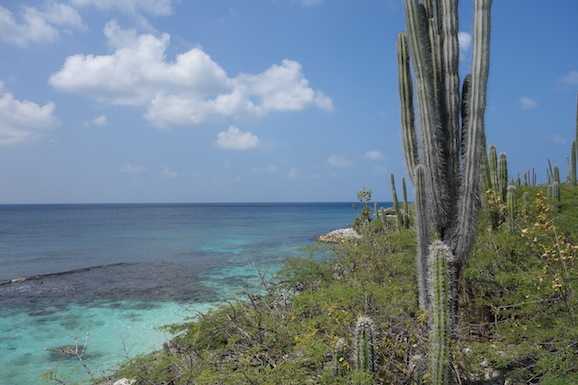Above: Bonaire (CJ Photo)
MIAMI — By Alexander Britell
Are travelers to the Caribbean thinking Dutch?
While Caribbean tourism arrivals grew 1.8 percent in 2013, it was the Dutch Caribbean that led the way, significantly outperforming its regional neighbours, according to estimates released Monday by the Caribbean Tourism Organization.
The countries of the Commonwealth Caribbean saw a reduction of 0.5 percent in tourist arrivals last year, according to the CTO, but the Dutch Caribbean saw almost 5 percent growth, easily the largest improvement of any sub-region last year.
The growth of the Dutch Caribbean, which is comprised of Aruba, Bonaire, Curaco, St Maarten, St Eustatius and Saba, with an estimated total of more than 1.97 million stopover visitors.
That was followed by the United States’ Caribbean territories, which saw 3.7 percent growth and an estimated 3.92 million visitors.
Aruba saw the largest year-over-year improvement of any Caribbean destination with complete year-end data, with an increase of 8.3 percent.
So what drove Dutch Caribbean tourism growth?
It was, in part, due to a surge in travel from South America, borne out in the numbers.
Last year, as the Dutch Caribbean saw a 3.4 percent increase from traditional markets like the United States, tourist arrivals from South America rose by 18 percent compared to 2012, according to the CTO.
Curacao, for example, saw arrivals rise by 4.9 percent. And while the island saw no growth from the US market last year, it saw an 11 percent jump from tourists outside of the US, Canada and Europe.
Aruba, which saw 8.3 percent growth overall, did see a 4.8 percent increase from the US, but a 21.8 percent increase from areas outside of the US, Europe and Canada.
Indeed, South American arrivals to the Caribbean have been on a steady climb over the past five years, from around 859,000 in 2009 to just under 1.46 million in 2013.
But tapping South American tourists may be easier said than done for much of the region.
That’s because much of the Dutch Caribbean’s growth may have come from certain islands’ proximity to South America.
Indeed, while the ABC (Aruba, Bonaire, Curacao) islands saw growth from South America, St Maarten bucked the trend, actually posting a decline of 0.5 percent in tourists outside of the US, Canada and Europe.
That could be due to the fact that while Aruba, for example, is just 17 miles from the northern coast of Venezuela, St Maarten is more than 840 miles away.
On the whole, South American tourism did rise for the entire Caribbean, however, with a 13 percent increase in arrivals to the Caribbean, according to the CTO.
As for other markets, tourists from the US rose by 2.9 percent, from Canada by 0.7 percent and from within the Caribbean by 2.1 percent,.
Overall, tourism from Europe to the Caribbean fell by 3.7 percent.
This is the first in a series of reports on tourism to the Caribbean in 2013.
